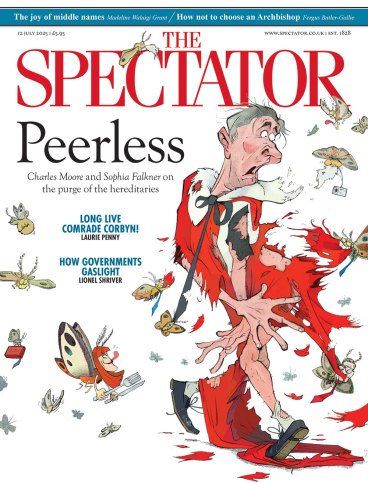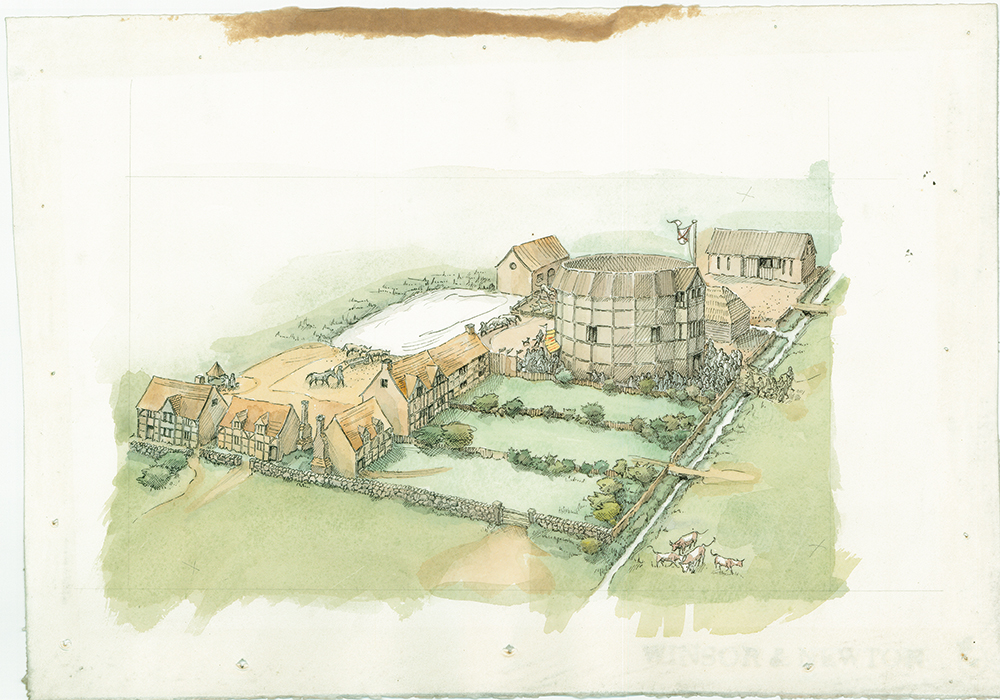
Pub quiz masters with a taste for William Shakespeare are spoiled for choice when it comes to red letter years. The playwright’s birth and death, the building and burning down of the Globe, and the publication of the First Folio (1564, 1616, 1599, 1613, 1623) are all dates that sit dustily in the corners of many of our brains, ready to be summoned when trivia duty calls.
But 1576? Not so much. Shakespeare was 12, ink-stained and anonymous at grammar school in Stratford-upon-Avon. Which only goes to show that untrammelled bardolatry isn’t good for theatre history, because even while tweenager William was memorising his Latin vocab a turning point in English drama was under wayin Shoreditch.
In that year the actor and joiner James Burbage (father of the future star Richard) signed a lease for half an acre of the former Holywell priory, tapped his brother-in-law for investment on the airy promise of future riches and set about constructing the Theatre, the country’s first complete and purpose-built commercial playhouse. (Those qualifications are important: adapted or multipurpose venues had been used by companies of players for many years.) It was timber frame, polygonal, three storeys high, lime-plastered and gaudily decorated, and within a few years of its construction already iconic. In 1578 a city preacher took aim at the ‘gorgeous playing place’, named after ‘the old heathenish theatre at Rome, a show-place of all beastly and filthy matters’.
This suburban Coliseum was soon followed by others – the Curtain, the Rose, the Swan, and, before the century was out, the Globe, itself fashioned from the Theatre’s timbers. Big amphitheatres needed to lure audiences through the door with a constantly changing repertoire. Burbage’s innovation created the conditions for a whole new theatre industry and a brand new profession with an undecided name. ‘Playwright’ was originally a slur, associating writers with laborious craftspeople such as cartwrights and shipwrights; and ‘playpatcher’ was no better. Most dramatists liked to pretend they were still ‘poets’.
The Theatre in Shoreditch was England’s first complete, purpose-built, commercial playhouse
But, as Daniel Swift argues, the Theatre and the art that emerged from it need to be understood in the industrious, ambitious context of manufacturing and trading London, where the livery companies (guilds of craftsmen and merchants) formed the bedrock of the urban economy and the city’s civic consciousness. It was members of the Worshipful Company of Carpenters who built the Theatre, and it was guild infrastructure – pathways to employment via apprenticeship; a collectivist attitude to financing – that enabled the old companies of touring players to plant themselves in the capital as permanent amenities. There was never to be a Worshipful Company of Thespians, but guild members (Grocers, Bricklayers, Mercers and more) are everywhere to be found in the story of Elizabethan and Jacobean theatre.
There has been a recent crop of excellent books about the vibrant state of public performance in the decades before Shakespeare, as well as the rich artistic culture of the guilds themselves. The script for the annual Lord Mayor’s Show – the closest thing the English Renaissance got to an Olympic opening ceremony – was a coveted gig for London’s playwrights. Swift’s concern is with the guild-mindedness of the early pioneers of English commercial theatre – the ‘start-up comedians’, as the pedantic writer Gabriel Harvey called them. (He meant players who are socially pushy, not actors who base themselves in WeWork offices.) And naturally the big beast here is Shakespeare, who emerges in Swift’s reading not as a ‘minor deity but a labouring writer’ – whose acquisition of genius can be understood as the artisan’s progress from apprentice to journeyman to master.
It is refreshing to read an accessible history of Shakespeare’s pre-Globe career, although the observation that we seldom consider his twentysomething years in London will come as a surprise to fans of Shakespeare in Love or the television series Will. And I wasn’t sure what to make of Swift’s invitation to imagine Shakespeare as a literal playwright’s apprentice, his ‘name upon that indenture, bound for a term of seven years to learn the art and mystery of playwriting’. It’s hard enough to keep the conversation about Shakespeare’s biography grounded in sanity without inventing documents that could never have existed.
But I was taken with the idea that the standout works of Shakespeare’s early career – Romeo and Juliet and A Midsummer Night’s Dream – can be imagined as his ‘masterpieces’: not just exemplary achievements in art – although they’re that, too – but the accomplished artefacts produced by a graduating journeyman to prove his skill and range and claim his mastership in a trade. It’s a nifty way of acknowledging Shakespeare’s debt to imitation, inspiration and collaboration.
There is plenty to interest the passionate Shakespearean here; and although the book contains some transcriptional errors and a few howlers (including a citation from that undyingly persistent 19th-century forger John Payne Collier), it offers provocations to scholars, too. And in the story of Burbage’s litigation-plagued Theatre we learn a valuable lesson: never embark on complex building projects with your in-laws.







Comments